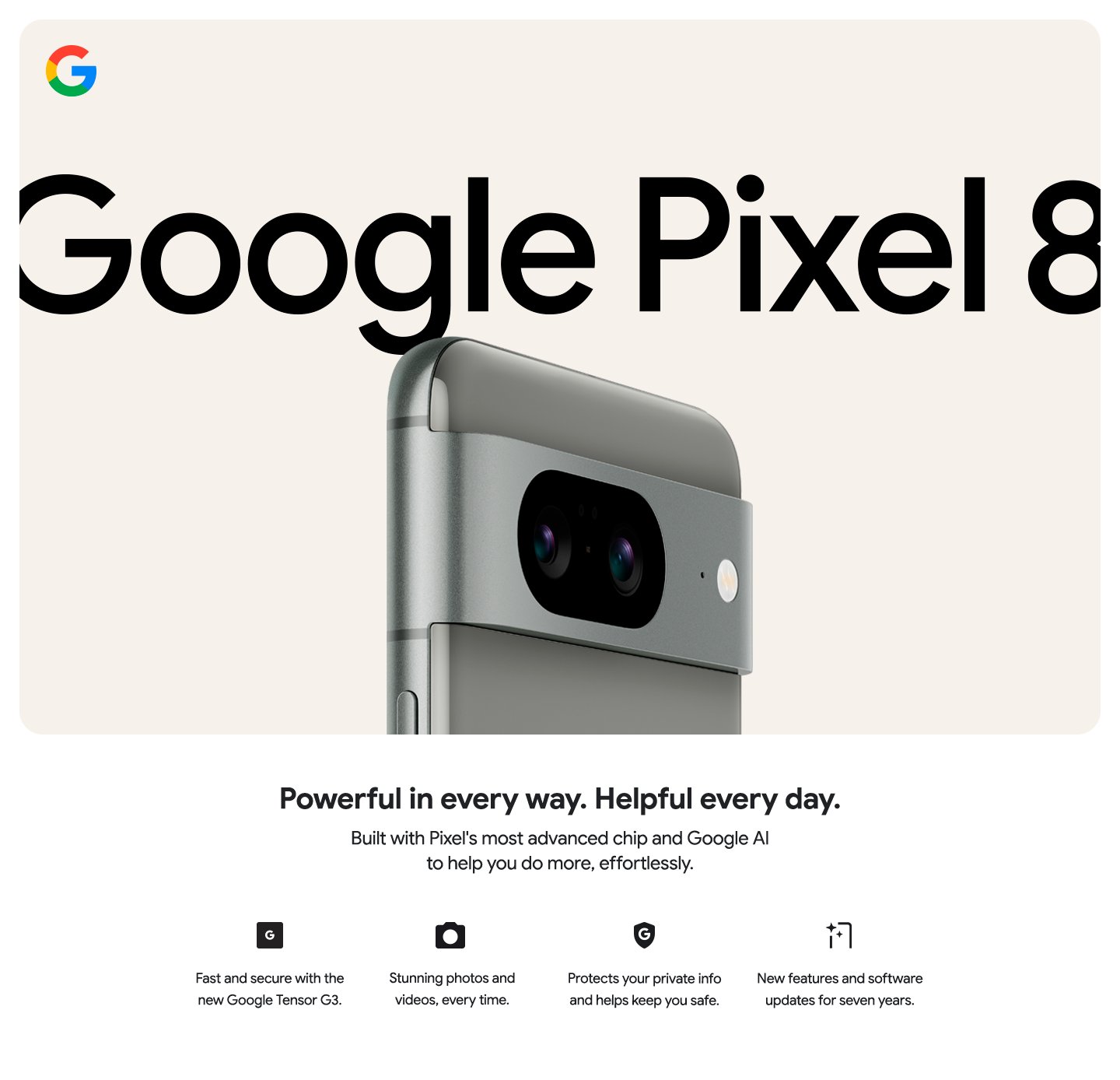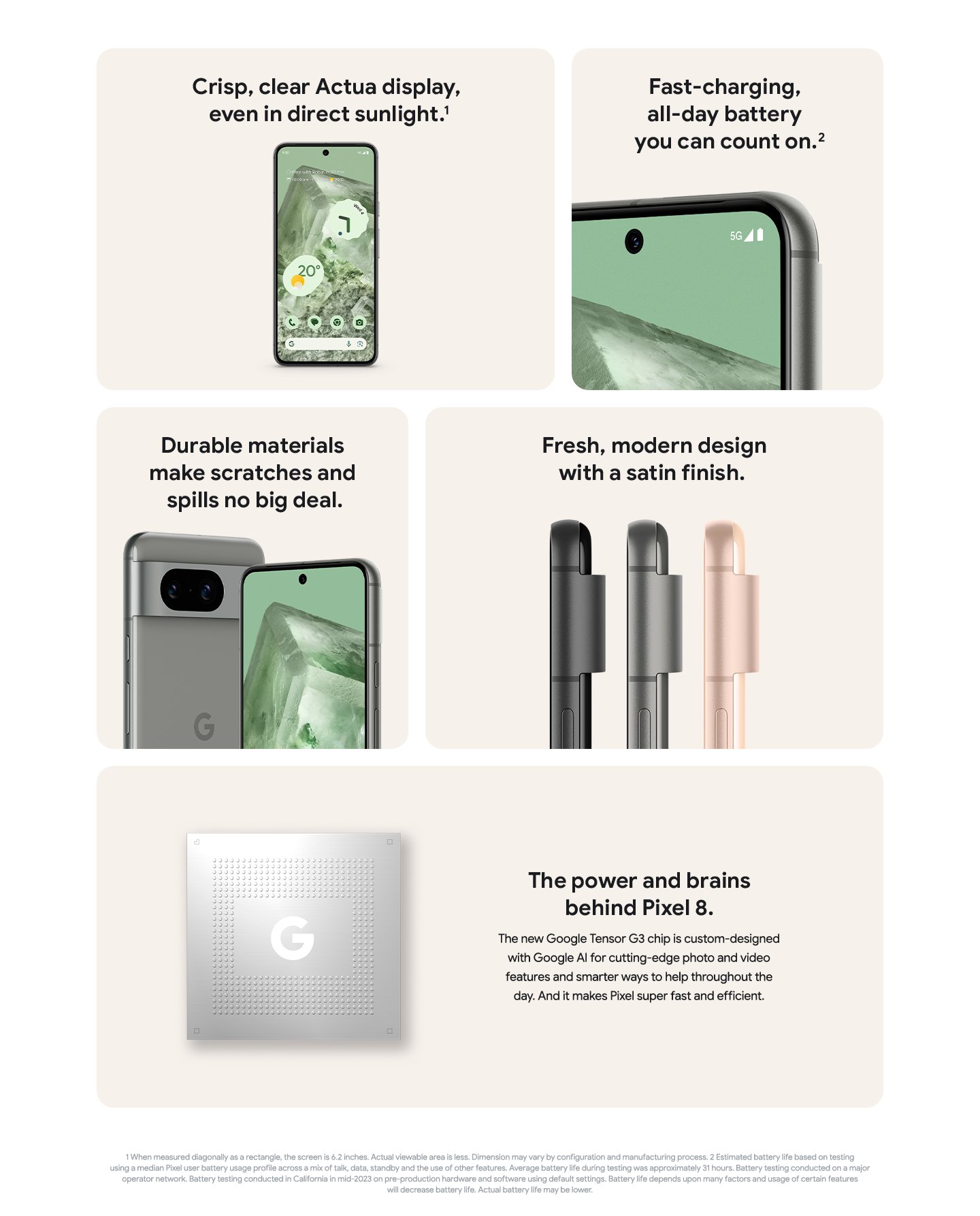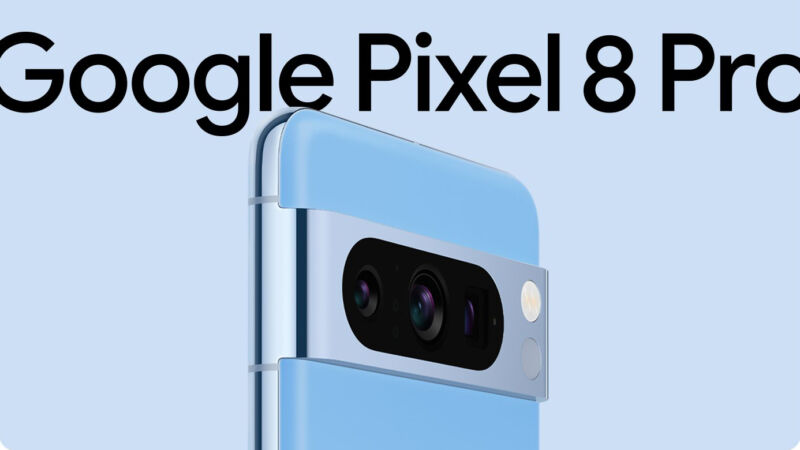The Pixel 8 is rapidly approaching its October 4 unveiling, but before then there are a bunch of leaks out there. Reliable leaker Kamila Wojciechowska has a whole list of Pixel 8 and 8 Pro specs over at 91mobiles, along with some Pixel market materials. The big news is that Google is finally giving its Pixel phones a longer support window. Pixel phones are getting seven years of updates, which is longer than Apple. Google pitches the Pixel phones as the flagship of the Android ecosystem, and now, if this spec sheet pans out, the OS maker is finally giving them an update plan to match.
Currently, Pixel phones have three years of OS updates and five years of security updates, which is not only beaten by Apple's update policy but is also inexplicably worse than many of Google's Android partners. For instance, Samsung and OnePlus offer four years of OS updates, albeit with some caveats around arrival times and the security update cadence. Apple doesn't have a policy written in stone anywhere, but with the iPhone X not making the jump to iOS17, that makes for a five-year major OS update policy if you're counting to 2022's iOS16, though with some point updates in 2023 you could argue six years.
Google has messed around in the past by calling its current "three years of major OS updates and five years of security updates" plan "five years of updates," but this spec sheet very clearly says "seven years of OS, security, and feature drop updates." That would comfortably lead all major manufacturers, leaving only Google and Fairphone at the top of the charts.
In most of the Android world, manufacturers are dependent on their system on a chip vendor's update policy (that's usually Qualcomm) to provide Android updates. The process of shipping an Android update is an ultra-complicated relay race from Google's Android builds to the SoC vendor to the phone manufacturer. With the launch of the Pixel 6, Google started making its own SoCs (with a lot of help from Samsung's Exynos division), so every company in each step of the Android update process is just "Google." With no one else to collaborate with, the updates can last as long as Google wants.
-
 More Pixel 8 Pro features leaked from Google's site.
More Pixel 8 Pro features leaked from Google's site. -
 The base-model Pixel 8 section.
The base-model Pixel 8 section. -
 Pixel 8 features.
Pixel 8 features.
The specs for the Pixel 8 Pro include something called a "Super Actua" display, which the marketing docs say will work "even in direct sunlight." The spec sheet lists 1600 nits in HDR mode and 2400 nits in "peak brightness" sunlight mode. That's probably a high point for a sunlight mode—it's certainly better than the peaks of the S23 Ultra (1750 nits) and iPhone 15 Pro Max (2000 nits)—but noon sunlight is 1.6 billion nits. Manufacturers keep picking this fight with the sun, and while I guess brighter is better, I'm still not confident any phone will put a dent in sunlight.
The Pro display is the usual 120 Hz, 6.7-inch OLED, but the aspect ratio is tweaked a bit to 20:9 (the 7 Pro is 19.5:9). This spec sheet also lists a funky resolution of 2992×1344 instead of the usual 3120×1440. The device dimensions have not really changed beyond a factional millimeter, and the Pro clocks in at 162.6×76.5×8.8 mm. The battery is pretty much the same at 5050 mAh, and it still only has 30 W charging. It still has 12GB of RAM. The storage is all sorts of disappointing, with the base storage tier still 128GB, while lots of phones start at 256GB, and it's still UFS 3.1 storage, while most other flagships have UFS 4.0.
The non-pro Pixel 8 is smaller, now 6.2 inches instead of 6.3 inches, with a noticeably smaller width and height to boot. It's now at 150.5×70.8×8.9 mm. The Pixel 7 is 155.6x73.2x8.7 mm. The display is branded "Actua," and not "Super Actua," and that means 1400-nit HDR and 2000-nit peak brightness. It's still 120 Hz 2400×1080, and the lower power mode still caps at 60 Hz instead of the dynamic refresh rate of the Pro model, which can go down to 1 Hz when you aren't scrolling or watching a video. The battery is jumping from 4355 mAh to 4575 mAh, and the phone is still packing 8GB of RAM and 128GB of storage.
The one update we know is coming is the Google Tensor 3 SoC. This will be the first Google SoC to have an actual CPU upgrade. The Tensor 1 and 2 had CPU clusters headlined by two Arm Cortex X1 CPUs and benchmarked similarly. Wojciechowska previously reported the Pixel 8 would switch to a newer Cortex X3 CPU, followed by four Cortex A715 cores and four A510 cores. This would put it in the same class as a Qualcomm Snapdragon 8 Gen 2.
As for the most important spec, the price, 9to5Google has a leak for that and says everything is getting $100 more expensive in the US. The report has the Pixel 8 at $699 and the Pixel 8 Pro at $999, with a ship date of October 12. Check back on October 4, when all of this can be officially confirmed.



3175x175(CURRENT).thumb.jpg.b05acc060982b36f5891ba728e6d953c.jpg)
Recommended Comments
There are no comments to display.
Join the conversation
You can post now and register later. If you have an account, sign in now to post with your account.
Note: Your post will require moderator approval before it will be visible.